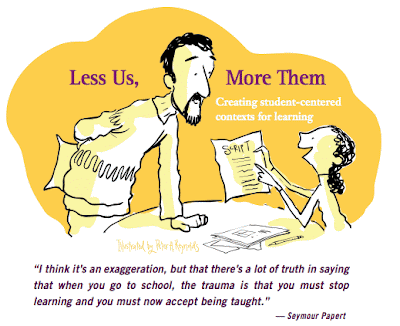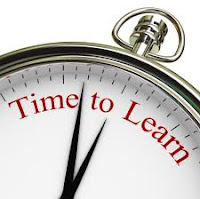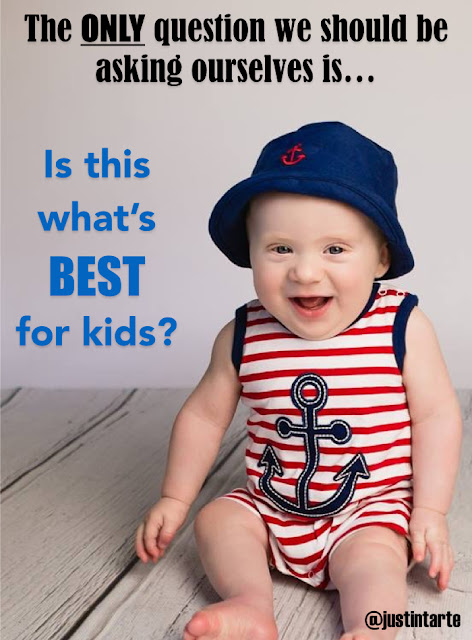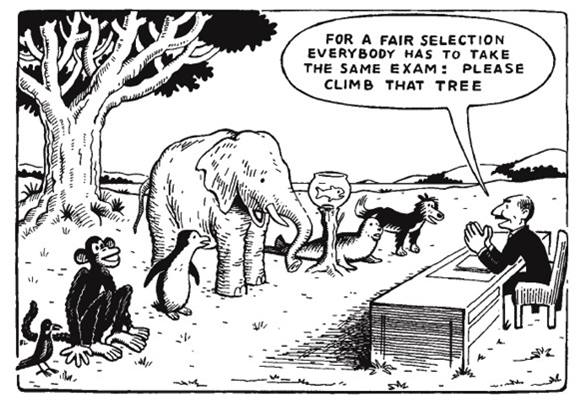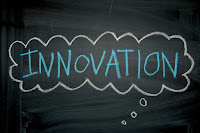Student engagement... a topic that is commonplace in schools and school districts around the world. The goal being that we want to have highly engaging classrooms where our students are intimately and passionately engaged in whatever task they are working on.
Engaged classrooms are where learning occurs and one of the defining characteristics of a great teacher is the ability to have his/her students engaged in learning.
But...I find student engagement to be a tricky and slippery slope at times because how we define student engagement can vary from educator to educator.
For example, when looking at a student who is working and doing what they are supposed to be doing, can we automatically assume they are engaged? Are they cognitively engaged or are they merely compliant and obedient? What about the kid who is passionately doodling and completely ignoring whatever the rest of the students and class are doing? Do we assume the student is not cognitively engaged because the student isn't compliant and obedient?
 My point is simple... student engagement and the gauging of student engagement really aren't as easy or straightforward as some would think.
My point is simple... student engagement and the gauging of student engagement really aren't as easy or straightforward as some would think.
Also worth noting... I believe most of our kids are truly engaged at most times during the day. The question is... are they engaged in what we are wanting them to be engaged in...
Having said all that, here are 5 ways I feel pretty confident about in terms of knowing if your students are truly cognitively engaged in the learning occurring in your class.
1). Your students are asking in-depth questions that are specific and relevant to the learning occurring in your class and the questions go beyond simple yes and no answers.
2). Your students are curious about the topic and are expressing an interest in exploring the topic further beyond even your original intent.
3). Your students are taking the initial and baseline information and are creating and designing something completely different and completely new.
4). Your students are able to explain the purpose and reasoning behind learning what they are currently learning and see how it relates to their lives and the bigger picture.
5). Your students can clearly explain and articulate where they are in terms of their learning progression... they know where they are doing well and they know where they are still struggling.
What other signs and indicators would you say constitute true student engagement?
Engaged classrooms are where learning occurs and one of the defining characteristics of a great teacher is the ability to have his/her students engaged in learning.
But...I find student engagement to be a tricky and slippery slope at times because how we define student engagement can vary from educator to educator.
For example, when looking at a student who is working and doing what they are supposed to be doing, can we automatically assume they are engaged? Are they cognitively engaged or are they merely compliant and obedient? What about the kid who is passionately doodling and completely ignoring whatever the rest of the students and class are doing? Do we assume the student is not cognitively engaged because the student isn't compliant and obedient?
 My point is simple... student engagement and the gauging of student engagement really aren't as easy or straightforward as some would think.
My point is simple... student engagement and the gauging of student engagement really aren't as easy or straightforward as some would think.Also worth noting... I believe most of our kids are truly engaged at most times during the day. The question is... are they engaged in what we are wanting them to be engaged in...
Having said all that, here are 5 ways I feel pretty confident about in terms of knowing if your students are truly cognitively engaged in the learning occurring in your class.
1). Your students are asking in-depth questions that are specific and relevant to the learning occurring in your class and the questions go beyond simple yes and no answers.
2). Your students are curious about the topic and are expressing an interest in exploring the topic further beyond even your original intent.
3). Your students are taking the initial and baseline information and are creating and designing something completely different and completely new.
4). Your students are able to explain the purpose and reasoning behind learning what they are currently learning and see how it relates to their lives and the bigger picture.
5). Your students can clearly explain and articulate where they are in terms of their learning progression... they know where they are doing well and they know where they are still struggling.
What other signs and indicators would you say constitute true student engagement?
